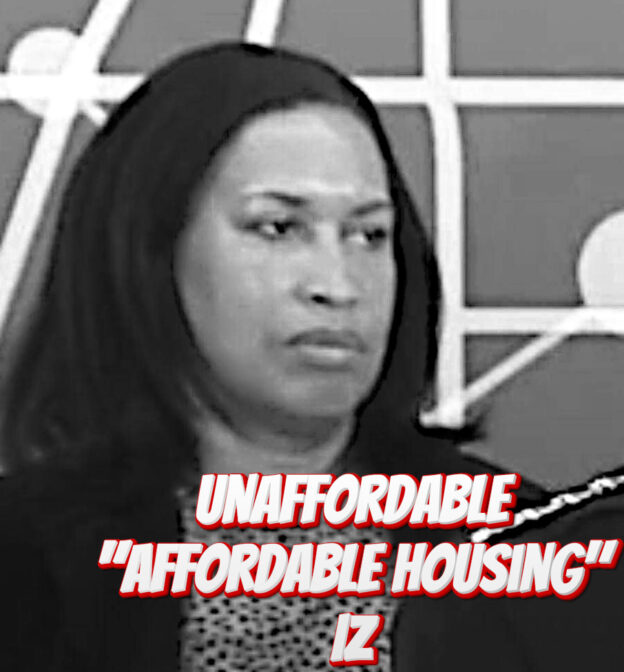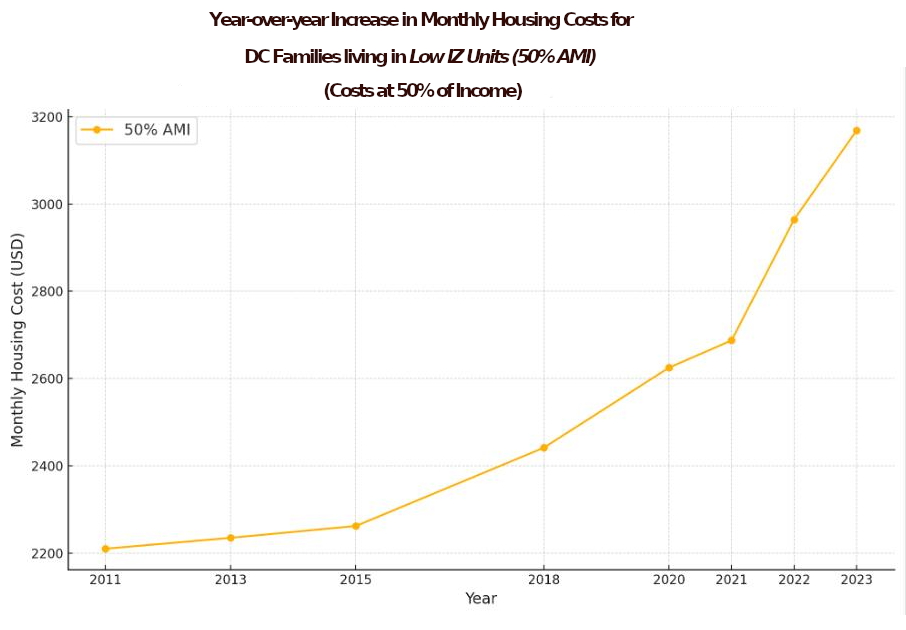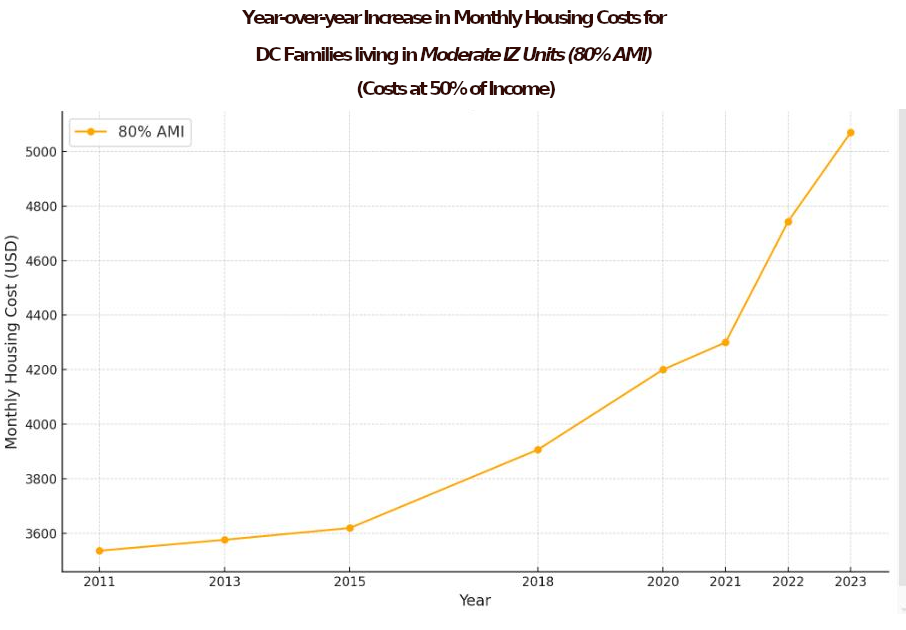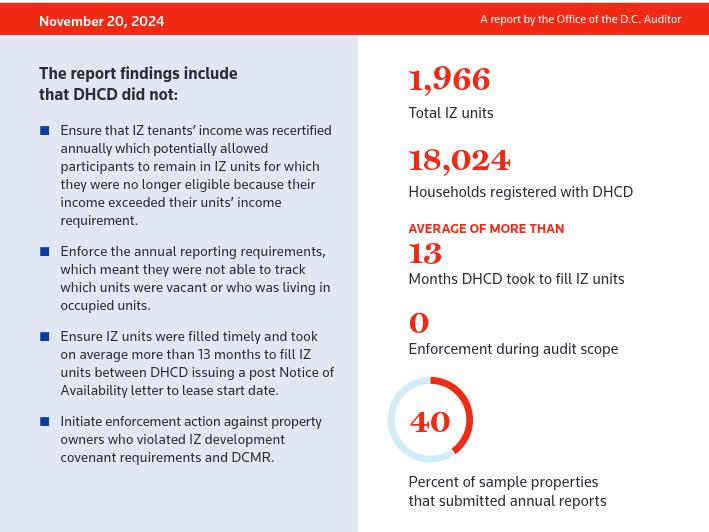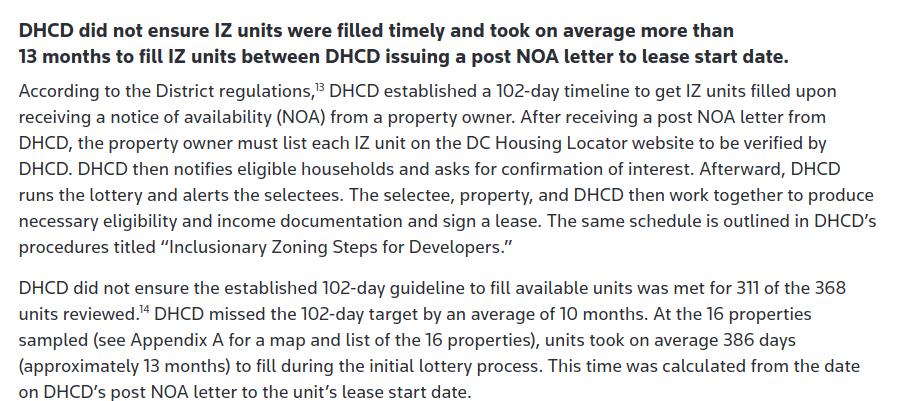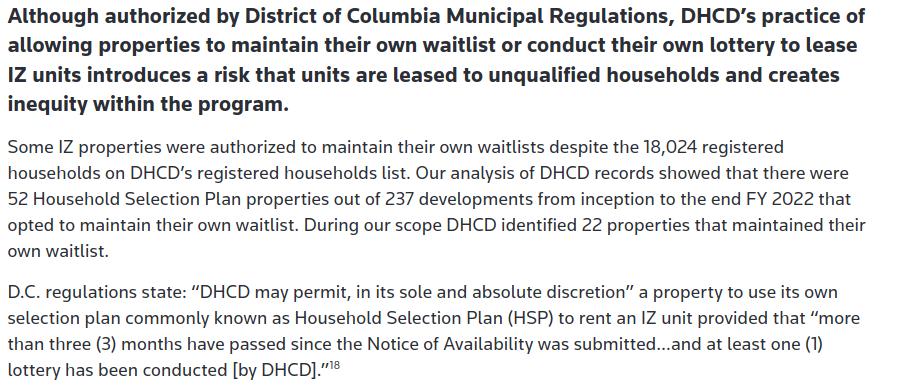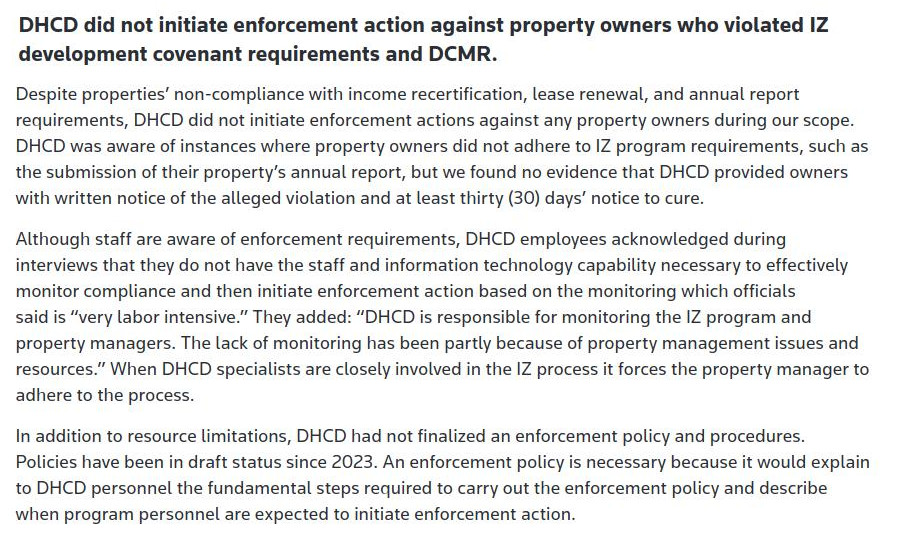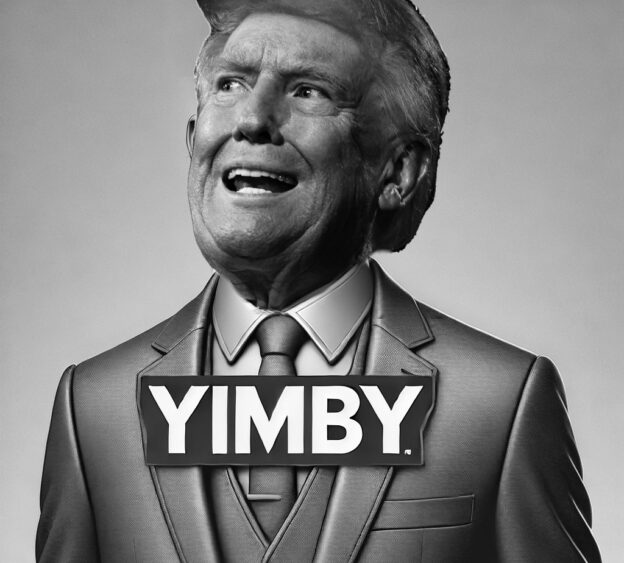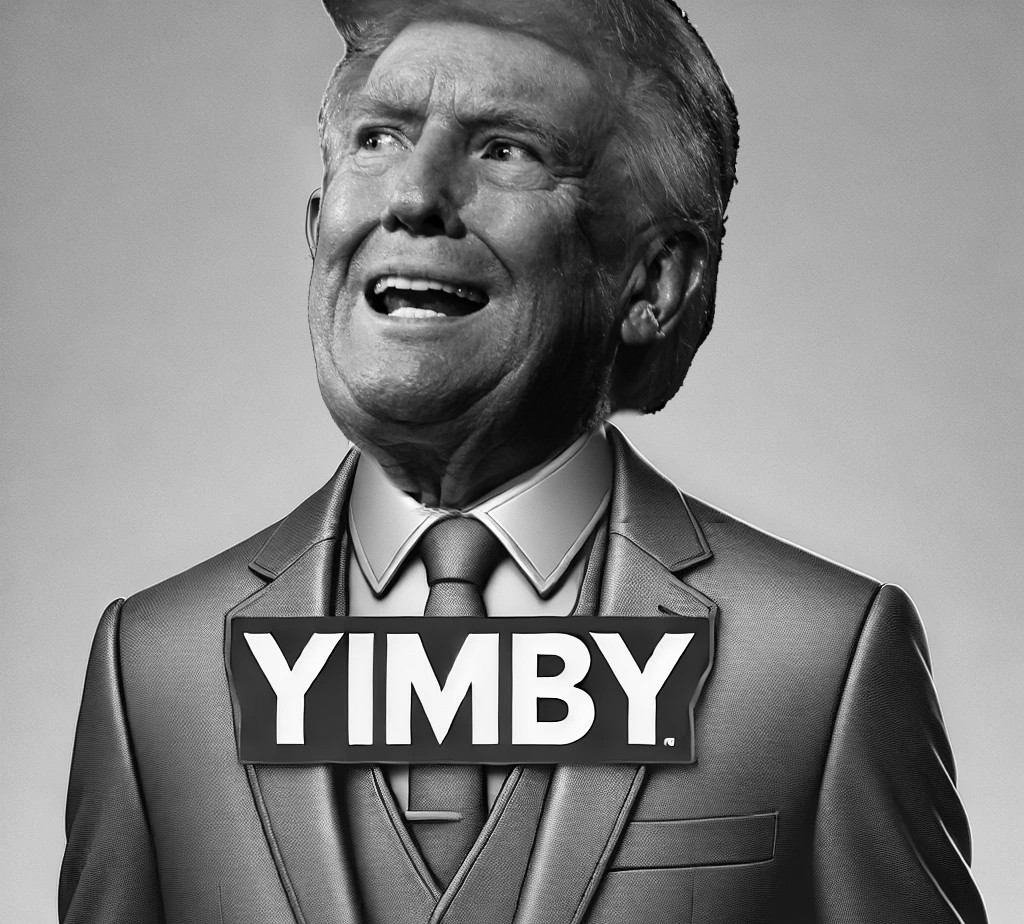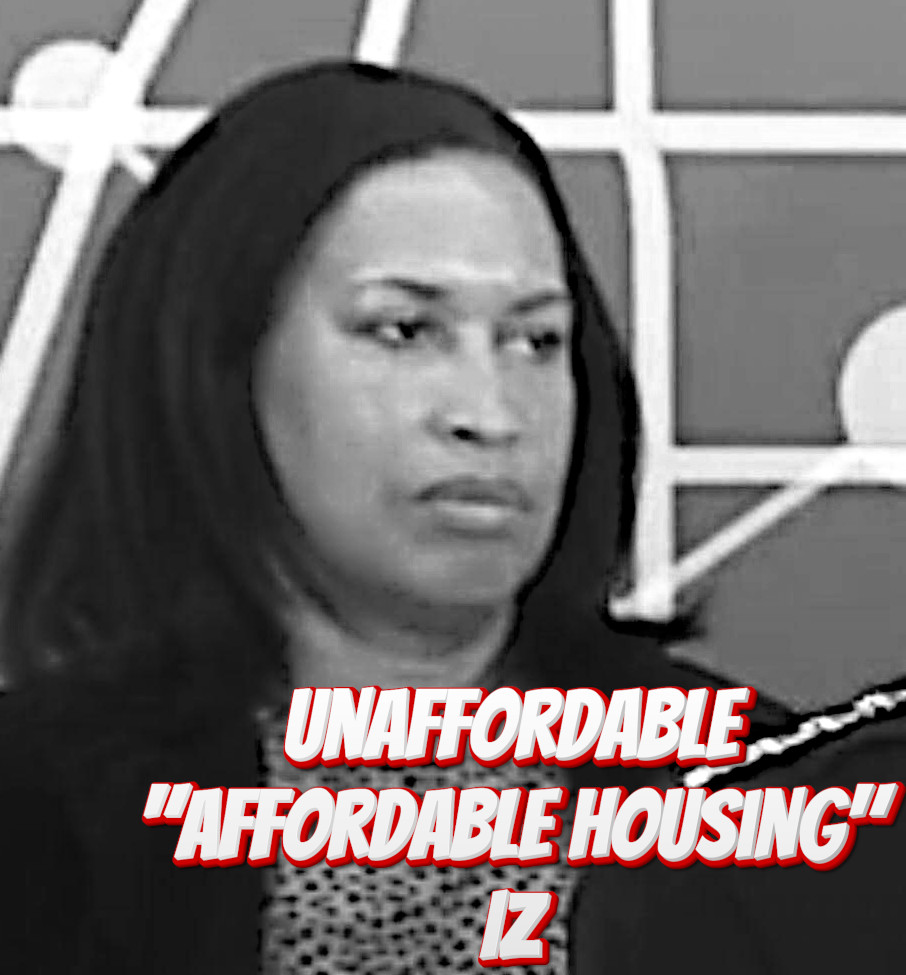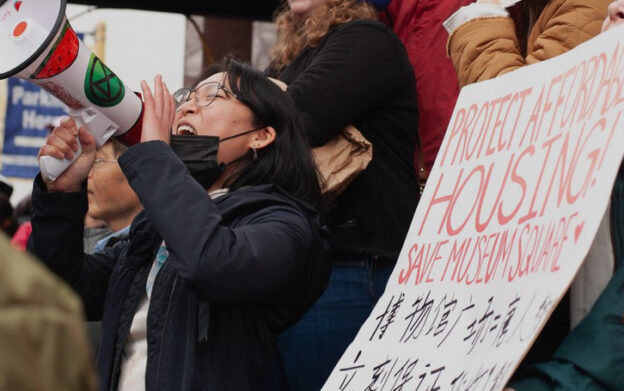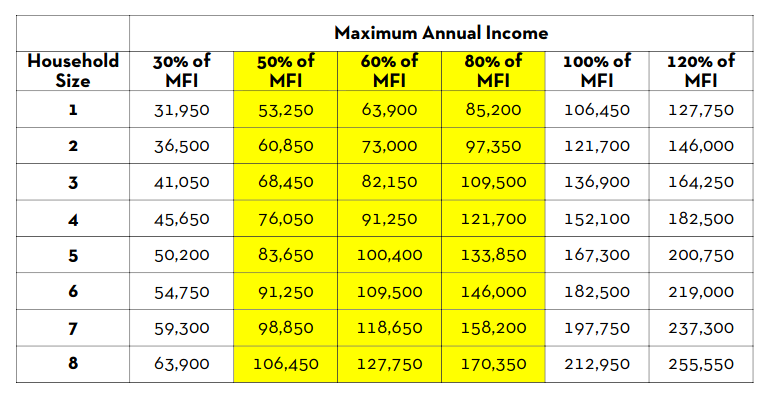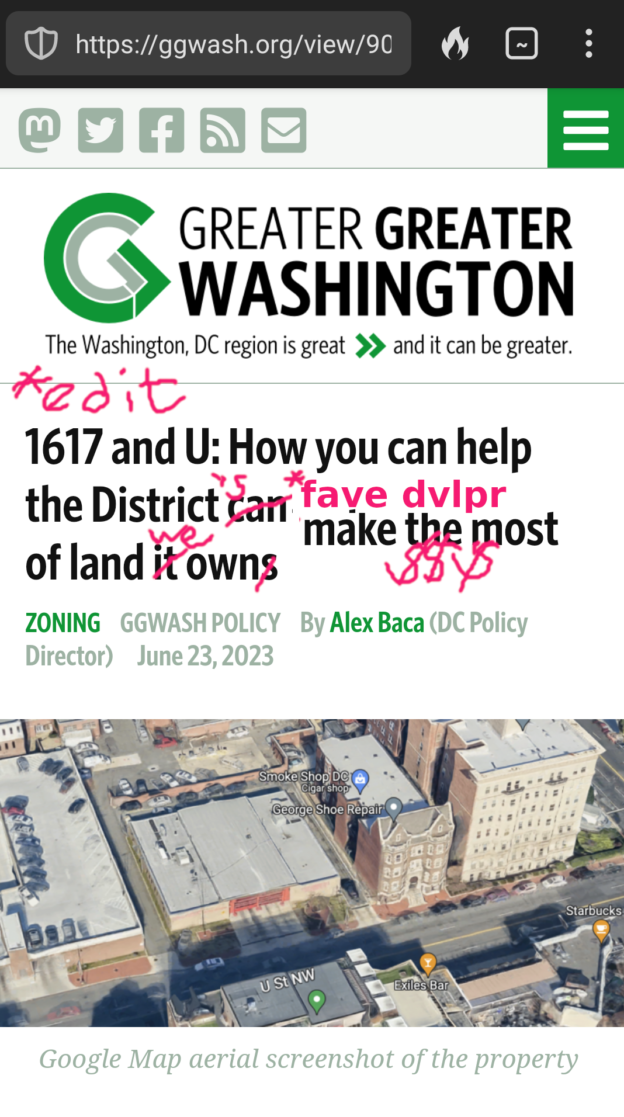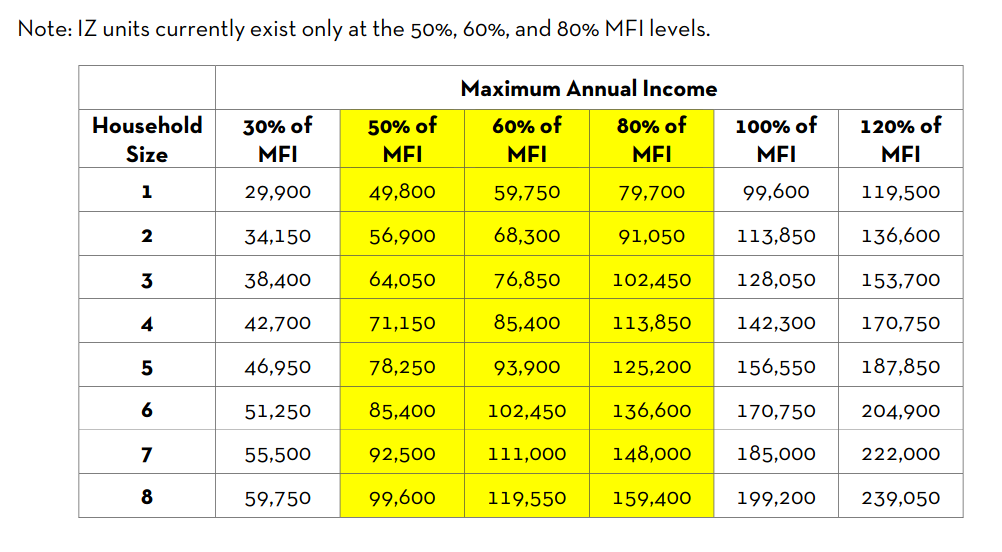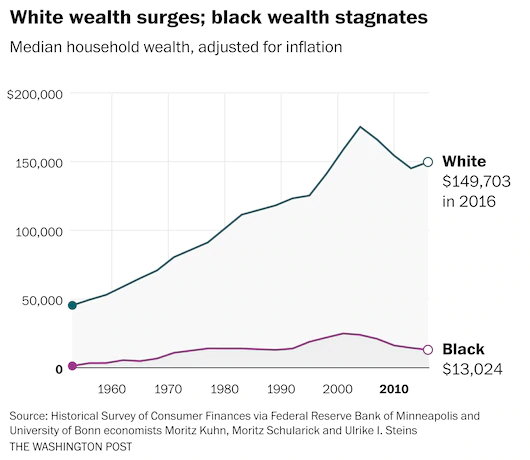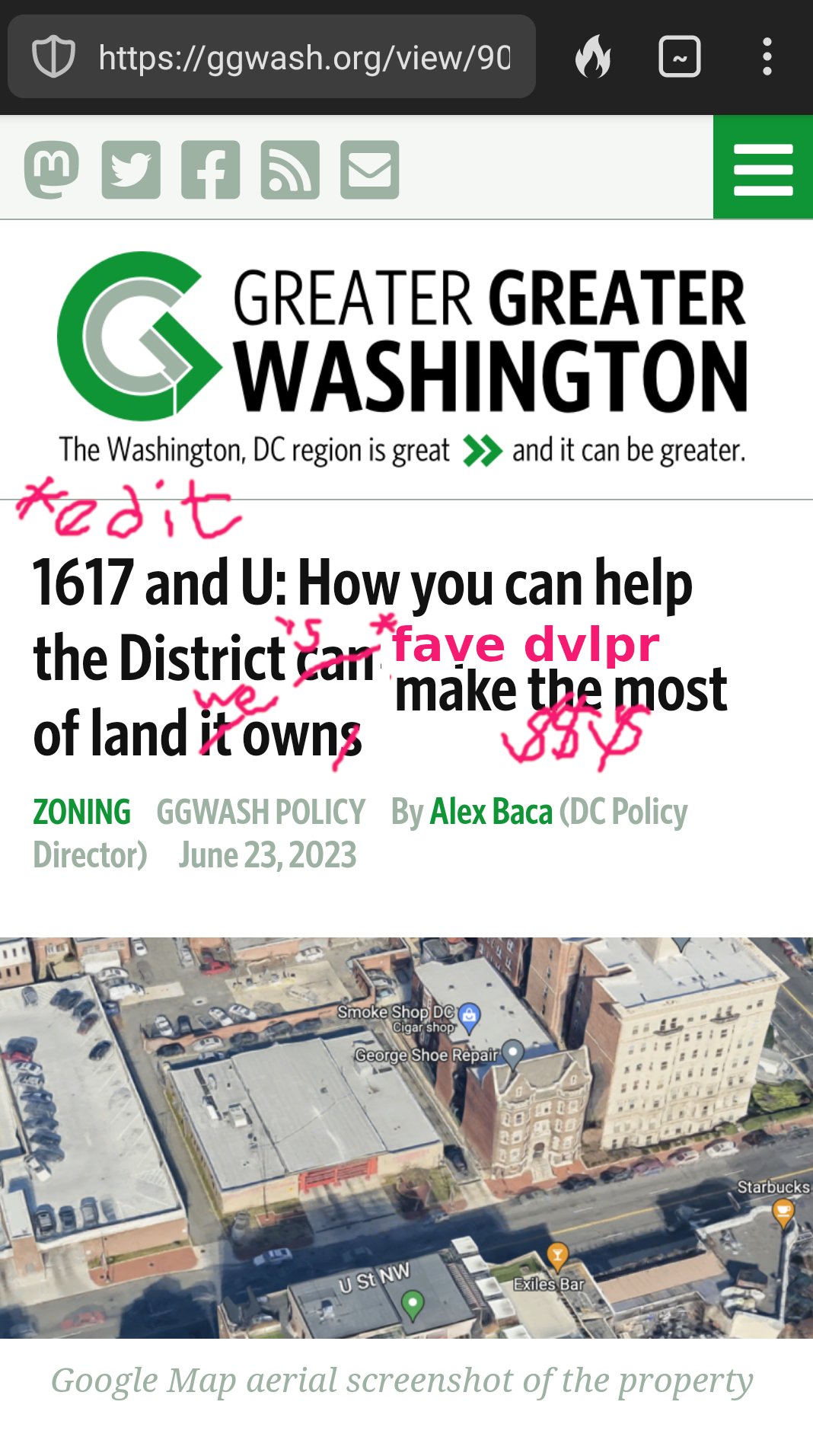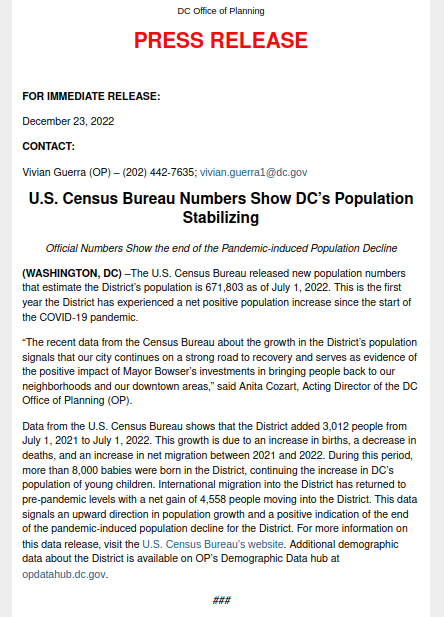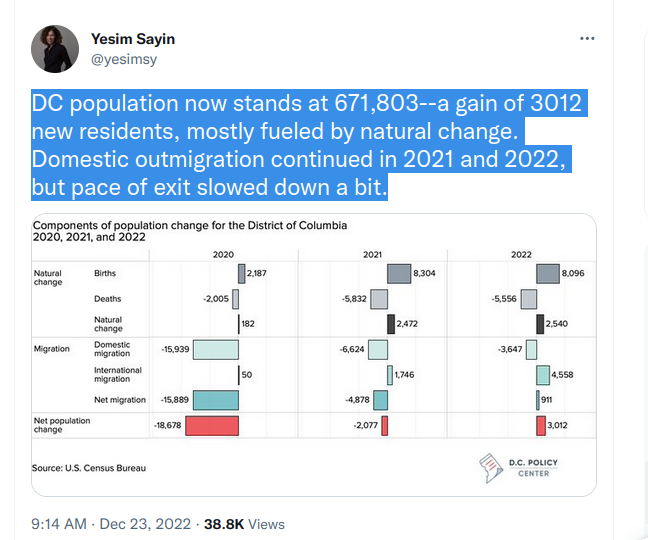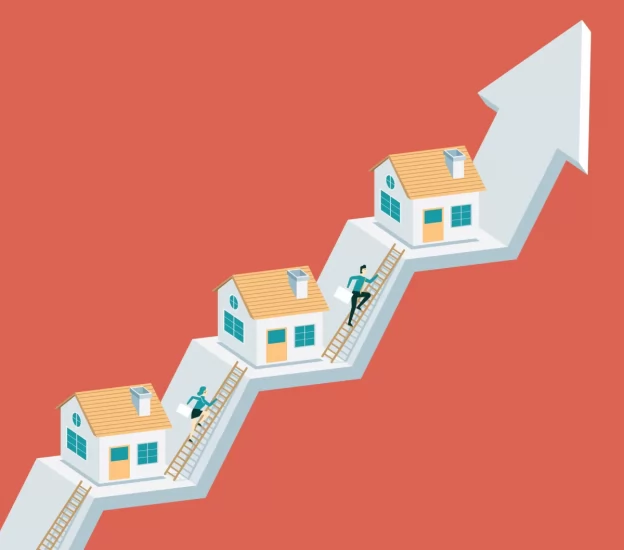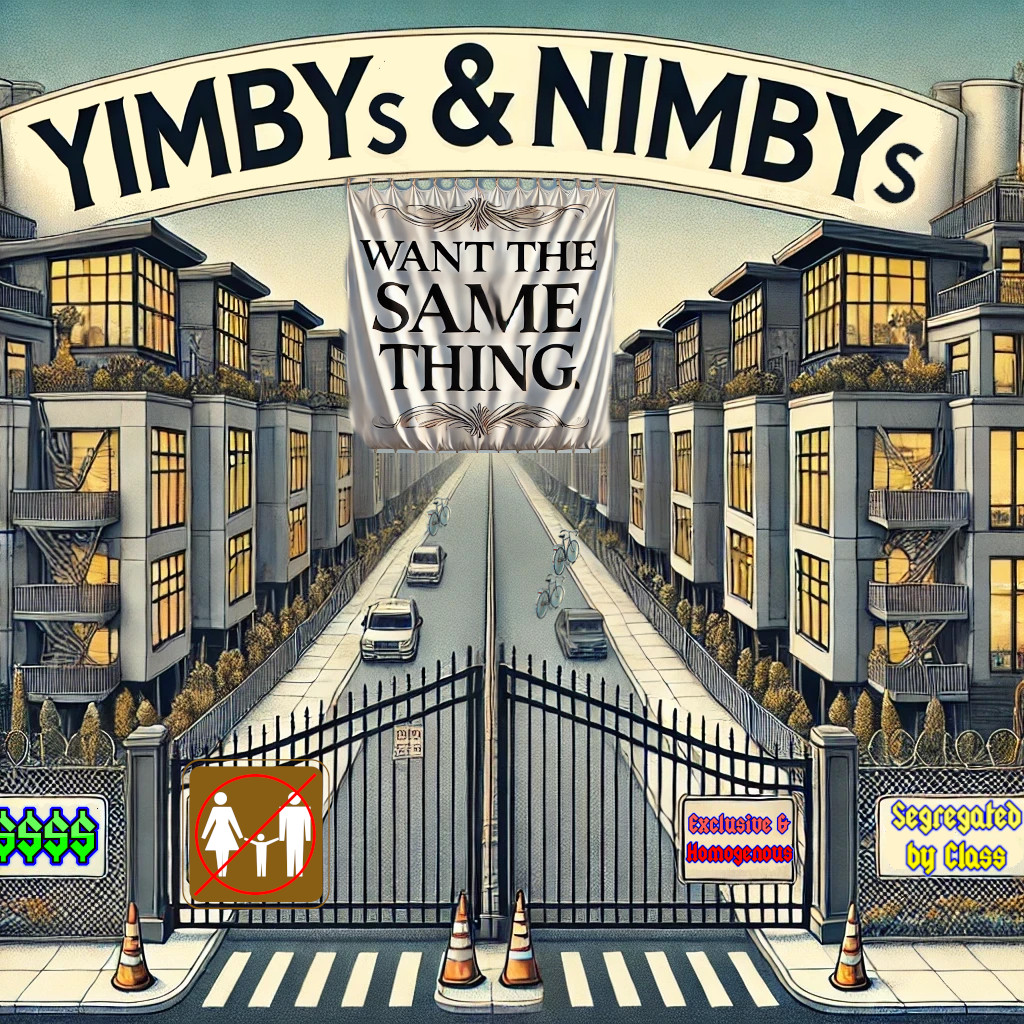

- More than half of DC's primary “affordable” housing units (called IZ) have been built to serve the 80% AMI/MFI bracket of IZ-registered households (~1,050 / ~2,000 IZ units set at 80% MFI).
- 65% of the IZ units were built for mostly single-persons, perhaps some two-person households (1,300 studio & 1-bedroom units had been built).
- This means the vast majority of DC's “affordable” units are for professionals making $85,000/year.
- More than 4,600 IZ registrants are 3+ person households (families) vying for just one hundred and twenty-three (123) three+ bedroom IZ units built.
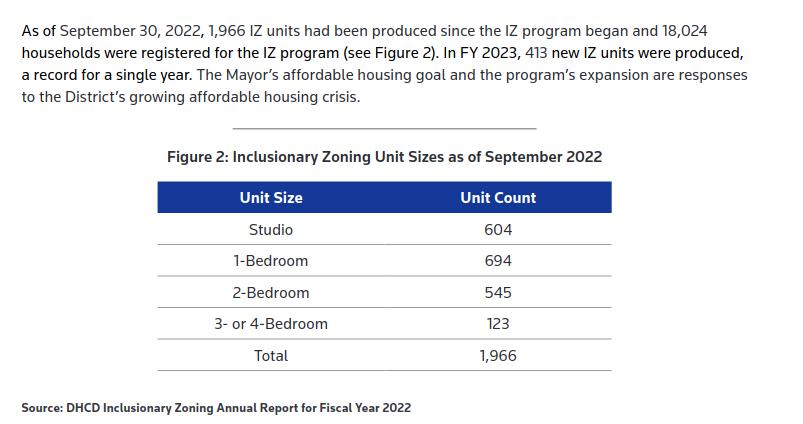
For those clamoring for more unaffordable IZ units, I can assure you they will be peppered throughout all the new density up and down Wisconsin, Connecticut, etc.

“I can tell you, some of the concerns that I've had, not just with this case, I hear all this about affordable housing and we talk about it all the time and don't get me started. [I'm] really getting on this because from my standpoint, I've said this previously, [on] affordable housing, it seems like the more housing we get the more the price goes up. I hear the argument Mr. Dettman, that if you increase the supply, [let me] make sure I got my economics right, if you increase the supply the cost comes down. [But] we increase the supply and [the price of housing] goes up. That's Anthony Hood's opinion. I'm a realist. I'm going about what I see, not what I hear, because if I go by what I hear, yea everything is affordable.”

For example Rondell Jordan said (
https://www.youtube.com/live/R44Nifxaw6E?feature=shared&t=14648):(4:05:44) “The inclusionary zoning program, touted as a solution to housing affordability, has been nothing but a smokescreen for gentrification. IZ has done more to fuel displacement of Black residents than to stop it.”
(4:06:14) “The district’s flagship affordable housing program amounts to nothing more than modern-day redlining. Instead of red lines on a map, we now have affordability requirements rigged to exclude Black residents.”
On Thursday, February 6, 2025, John Wheeler via groups.io <johnwheeler.dc=gmail.com@groups.io> wrote:
There was no misstatement in my post. ANCs are statutorily required to provide at least two forms of notice for meetings. While DC OAG has previously stated in prior guidance letters that posting notice via email listserv is acceptable, “posting a meeting notice on the ANC website could qualify as another 'manner approved by the Commission' as long as the ANC approved it by vote.” ANC 3/4G's bylaws do not specify that valid notice includes posting on the ANC's website. So, unless the ANC specifically voted at the 1/27 meeting to provide notice via its website of the 1/29 special meeting, then the special meeting would be invalid.And it is nonsensical to argue that the meeting was urgent because the Zoning Commission was meeting the next day to decide the case that was the subject of the urgent meeting. Yet the ANC knew of the meetings months before and had discussed it months before. The urgency was created by the ANC failure to act sooner, not a lack of notice.
As to the substance of the ANC’s last second resolution:
1. The notion that there is anything that has not been said in testimony already given before the Zoning Commission or in the years of public discussion that might have been said in a contested hearing doesn’t make sense—they heard from the ANC and affected people, they just were not convinced that the ANC’s concerns outweighed the goals of the Comprehensive Plan and the affordable housing crisis.
2. Chairman Hood’s question concerning the negative reaction to affordable housing in Rock Creek West is perfectly legitimate. Many people are asking the same thing.3. The response to my post shows a lack of knowledge of how a contested hearing is conducted. Parties (that includes the ANC) have a limited amount of time to present a case. A party cannot cross-examine the decision makers (members of the Zoning Commission). A party can cross examine witnesses. That also means that ANC commissioners, assuming they are witnesses, can be cross-examined. The ANC would be required to submit well in advance of the hearing, its list of witnesses, a statement of what each witness will say, and what it intends to prove. To do it right, is a lot of work. However, in this case, I cannot imagine there would be any testimony that has not already been given over and over at the Rulemaking hearing. So, in the end, it is a big waste of lots of people’s time with the Zoning Commission reaching the same decision.John WheelerTo correct the misstatements of a prior post, first, that ANC 3/4G illegally conducted its January 29th meeting, DC Code § 1-309.11(c) allows for ANC meetings to be held on short notice “. . . in the case of an emergency or for other good cause articulated in the notice.” The situation was critically time-sensitive given that the Zoning Commission was to meet the next day to ratify its earlier decisions in case 23-25, addressing the rezoning of upper Connecticut Avenue from Livingston St. to Chevy Chase Circle. The ANC gave notice to the community and approximately 60 participants attended the meeting online, which is in keeping with usual online attendance.
With respect to the ANC’s resolution noting bias in the case by Anthony Hood, Chairman of the Zoning Commission, his remarks are available on YouTube, as cited below.
November 9, 2023 (https://www.youtube.com/watch?v=8A0ZQjAbjYs, starting at 2:06:50): “…every time there's something done in uh West Rock Creek there's always much much opposition and I want to submit that to the to the residents of Rock Creek West the whole other City we're trying to make it affordable for people to live in what is it about affordable housing that Rock Creek West and I know this is probably gonna give me they're gonna come after me but that's fine I'm used to it now what is it about Rock Creek West it always there's a problem with and not this not my first time saying it's always a problem with affordable housing what is it really that's trying to happen there I'm make no accusation I'm just curious uh I know there's some maybe some zoning issues but it's whenever it's affordable housing I notice there's a lot of opposition that gets drummed up and that's not a question for office of planning that's for the public so I will be asking that question as if we move if it's set down.”
April 29, 2024 (https://www.youtube.com/watch?v=8MiDnfH9EqI, starting at 2:52:00): “So why is it that every time something comes up, the word of affordable housing comes up in Ward Three, it’s a major issue? Am I missing something here? Why is it that the rest of the city accepts it and does it, but when it comes to this area, it’s always something?”
May 23, 2024 (https://www.youtube.com/watch?v=T18uiysiL0g, starting at 2:59:00): A Chevy Chase resident asks Chair Hood to retract his remarks about Ward Three. At 3:12:30 Chair Hood responds to her request, saying that he stands by his comments about Ward Three. “Every time you talk about affordable housing, there seems to be a problem.”
The Zoning Commission’s decision to conduct rulemaking as opposed to a contested hearing process for case 23-25 effectively precluded the ANC from cross-examining Chair Hood to challenge his assertions. His bias against our community could have played a role in the Zoning Commission’s decision to make it a rulemaking case in the first place, limiting the ANC’s involvement. Furthermore, it could have played a role in the Zoning Commission’s failure to give proper notice to the ANC of the November 9, 2023, hearing referenced above when the Zoning Commission “set down” the case as rulemaking. That was the one and only opportunity for the ANC to argue for a contested case at the set down.
Consequently, far from addressing “in great detail” concerns raised by the ANC about case 23-25, the Zoning Commission followed a process that by design prevented the ANC from going into great detail. It not only restricted our ability to question Chair Hood on his comments, but also to represent in full the views of our constituents.
By November 2023, the ANC had just completed the largest survey in its history, probing the opinions of our residents regarding the proposed redevelopment of the Civic Core. These opinions were brushed aside by the Zoning Commission, which gave the ANC hardly more time to testify than DC residents who do not even reside in Chevy Chase.
Surely, the many important issues created by the upzoning of Upper Connecticut Avenue that will irreparably impact the community deserved a full and fair airing before an impartial Zoning Commission. Indeed, all DC residents deserve a fair, unbiased zoning process regardless of which ward they live in.
Liz Nagy
Commissioner (Secretary)
ANC 3/4G-07_._,_._,_
Groups.io Links:
You receive all messages sent to this group.
View/Reply Online (#331462) |
Reply to Group
|
Mute This Topic
| New Topic
To post a message to this listserv, send an email to: ChevyChaseCommunity@groups.io . Put this email address into your contacts list. You do not need to go to the listserv's website in order to post to this forum. The website *does* have a huge archive of messages which every list member should know how to search.Listserv Rules: Sign your full name to messages. When posting emails to the listserv, do not ask for private replies unless selling or giving away items. When replying to an email, send your response to the list so all can benefit and the information can be later retrieved in an archive search. When disagreeing with members, or during contentious discussions only, avoid using `you` and `your` words. Focus on issues, not individuals, unless comments are about public or elected figures doing their jobs. Write short, descriptive subject lines. Use asterisks to *emphasize* a word, not ALL CAPS. Emails will be revised or returned that do not comply with these rules.
To join this group, send your name, home address and telephone numbers, in confidence, to the Listserv Moderators at: ChevyChaseCommunity+owner@Groups.io
Your Subscription | Contact Group Owner |
Unsubscribe
[dc4reality@gmail.com]_._,_._,_

